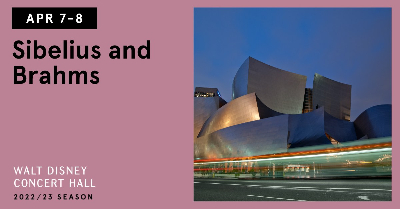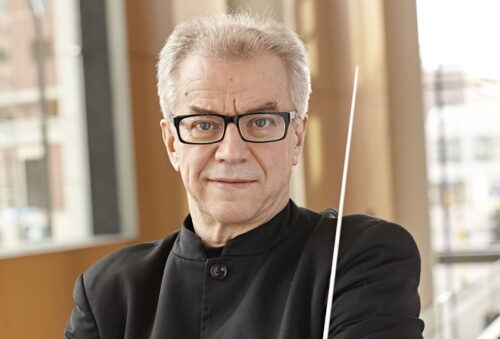STORMS, ROLLERCOASTERS, AND TURBULENCE
It was a wild night with the LA Phil at Disney Hall last weekend. For Brahms Piano Concerto No. 1, guest conductor Osmo Vänskä successfully immersed us in the young Brahms’s ominous soundscape. He let the music breathe naturally, holding out long rests unapologetically and often got down to the floor to get the gentlest pianissimo out of the strings.
Pianist Inon Barnatan, who wore a stunning suit, was graceful and elegant in his playing as he took over with a dominating presence while maintaining a curiously unassuming physicality at the piano. He sat close to the keyboard, I assume, to employ as much arm weight as possible for the long and heavy tremolos. His playing was crisp and clear throughout, and he wasn’t afraid to get dirty during deep, rumbling parts. He carefully paced Brahms’s long phrases and brought out the dense polyphonic textures.
Vänskä painted an appropriately serene and contemplative second movement, again relishing in the unsaid, creating vastness in the space between the notes, while Barnatan steadily guided us through deep emotion culminating in a most exquisite rendition of those final trills before the orchestra’s gentle conclusion. The stormy third movement took off with exhilarating force. The orchestra kept up wonderfully with Barnatan, who led with a thrilling and unstoppable forward drive, keeping us captivated and breathless until the final chords triumphantly resounded through the hall, triggering an eruption of enthusiastic applause.
Conductor and pianist formed a great team, actively cueing each other to achieve surprising and daring tempo fluctuations ’” the kind of organic, swelling tempo usually reserved for the solo performer ’” in a concerto already known for these types of challenges.
Barnatan returned to the piano to delight us with one of the most intimate and delicate encores I’ve experienced. His choice, Egon Petri’s piano arrangement of Bach’s May The Sheep Safely Graze, was a welcome contrast to the fiery storm we had just experienced. He skillfully crafted an extraordinary palette of simultaneous dynamic levels, which had an instant hypnotic effect. The melody soared prominently above the softly grounding pulse of the accompaniment chords, while the high shimmering figures danced in and out of our awareness. His gentle lullaby lured us into the sublime.
Back to the ominous for a world premiere and LA Phil commission: A wonderfully frightening rollercoaster of rising, sweeping gestures of chaos and increasing intensity in Donghoon Shin’s Upon His Ghostly Solitude. Featuring a full brass section and extended woodwind and percussion sections, plus harp, orchestral piano and celesta, the ocean of timbres added a thrill of varying textures and colors. There were frantic, rhythmic bursts, leading to climaxes of apocalyptic proportions, followed by soft retorts like devastating afterthoughts, shaking us to the core. Shin was in the house and happily came on stage to receive our applause (and, I hope, to enjoy the thrilled-but-still-terrified look on our faces).
After the interval, Vänskä achieved breathtaking lower dynamics and groovy articulated passages for the Sibelius Symphony No. 3. Ostinato strings built unrelenting excitement and added texture throughout, the woodwinds demanded a heated existential debate, and powerful horns created a strict order out of the chaos. Despite some challenges ’” not being together at times and a few weak entrances ’” Vänskä and the LA Phil delighted with a wonderfully turbulent, declamatory and majestic symphony.
photos courtesy of LA Phil



